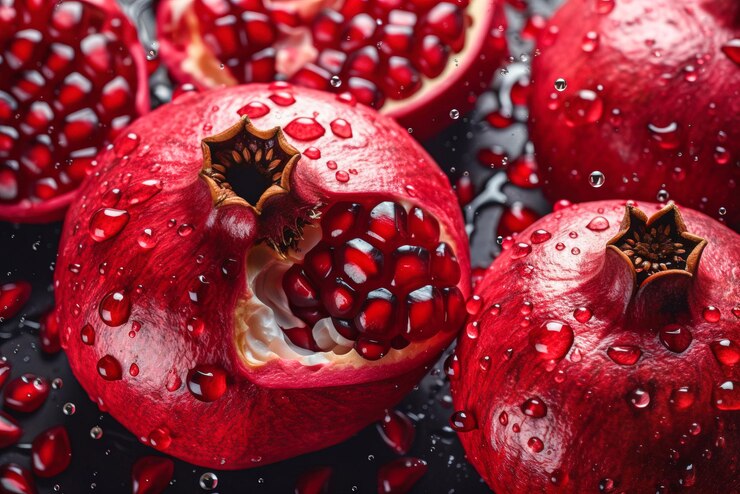When growing pomegranates in South Africa, there are several infections and diseases that you should watch out for. Here are some common ones:
- Fungal diseases:
a. Anthracnose (Colletotrichum spp.): This fungal disease affects the fruit and can cause dark lesions. Proper pruning and fungicide application can help control it. b. Root rot (Phytophthora spp.): It affects the roots and can lead to plant wilting and death. Well-drained soil and proper irrigation practices can help prevent this disease. c. Powdery mildew (Oidium spp.): This fungal disease appears as a white powdery coating on leaves, stems, and fruit. Fungicides and regular monitoring can help control it. - Bacterial diseases:
a. Bacterial blight (Xanthomonas citri subsp. citri): It causes leaf spots, twig dieback, and fruit rot. Copper-based sprays and strict sanitation measures can help manage this disease. b. Crown gall (Agrobacterium tumefaciens): This bacterium causes the formation of galls on the trunk and roots. Avoid planting infected nursery stock and practice proper sanitation. - Viral diseases:
a. Pomegranate mosaic virus: It causes mosaic patterns on leaves, stunted growth, and reduced fruit quality. There is no cure for viral infections, so prevention through the use of virus-free planting material is crucial. - Pests:
a. Pomegranate fruit fly (Ceratitis capitata): It lays eggs in developing fruit, leading to maggots inside. Regular monitoring, trapping, and insecticide application can help control this pest. b. Pomegranate aphids (Aphis punicae): These sap-sucking insects can cause leaf curling and reduce plant vigor. Beneficial insects and selective insecticides can be used for management.
It’s important to consult local agricultural extension services or experts for specific recommendations and guidelines regarding disease management in your specific area. They can provide valuable information on local conditions and control strategies to protect your pomegranate crop effectively.
Join 'Farmers Mag' WhatsApp Channel
Get the latest Farming news and tips delivered straight to your WhatsApp
CLICK HERE TO JOIN






